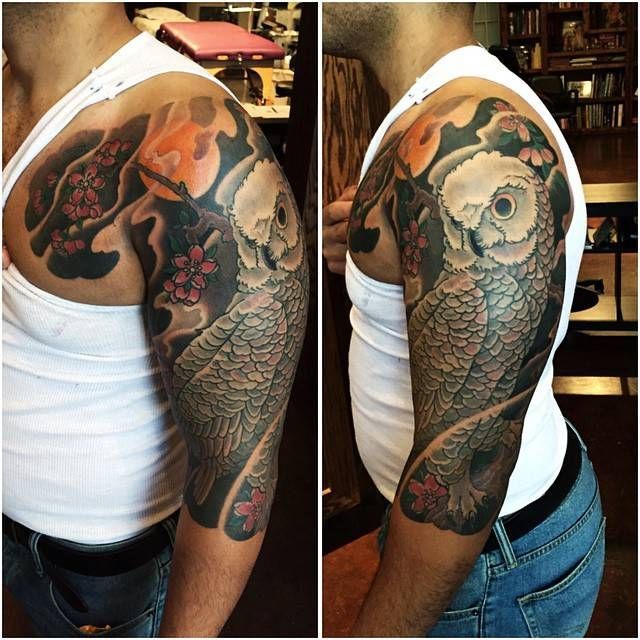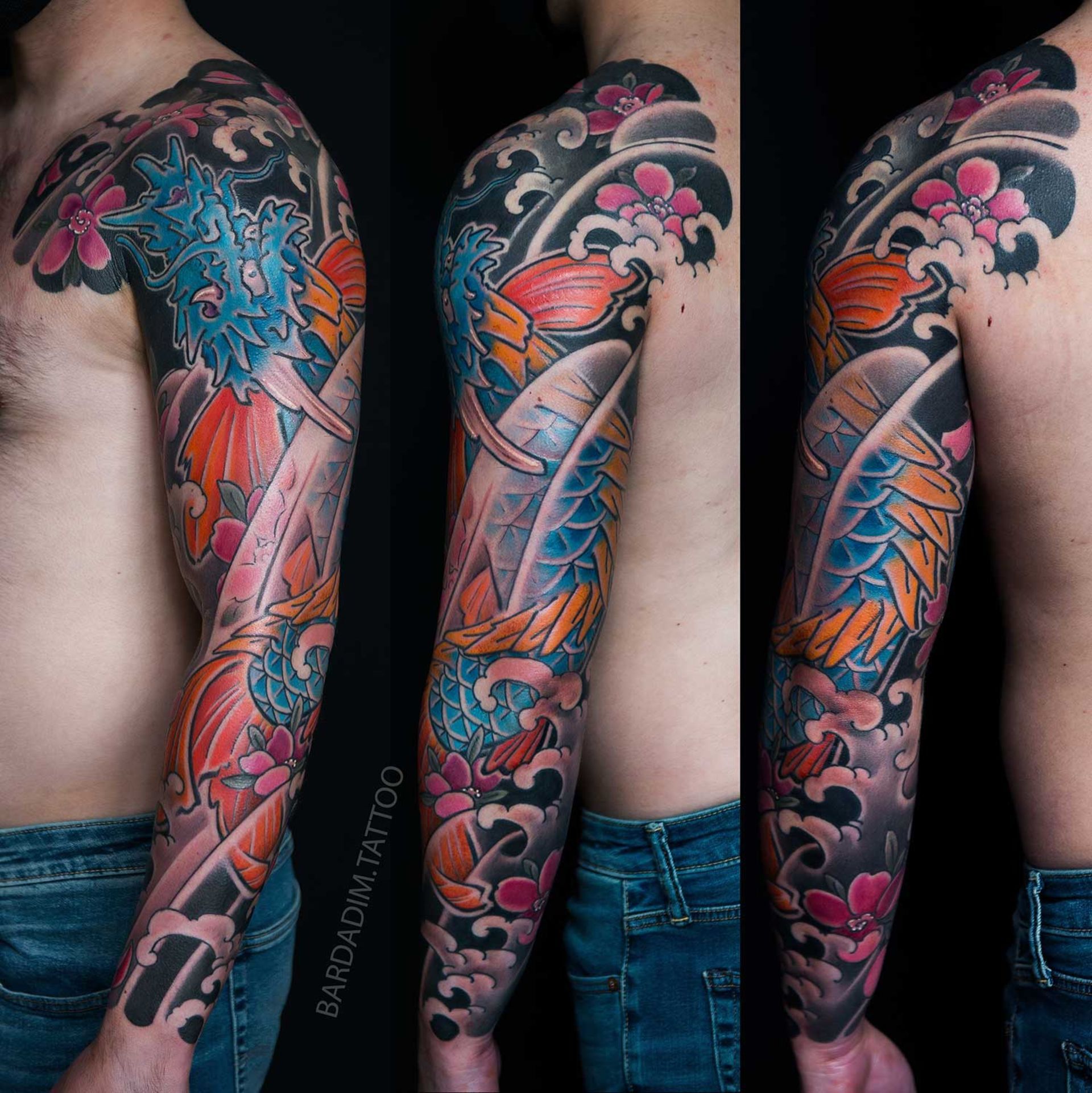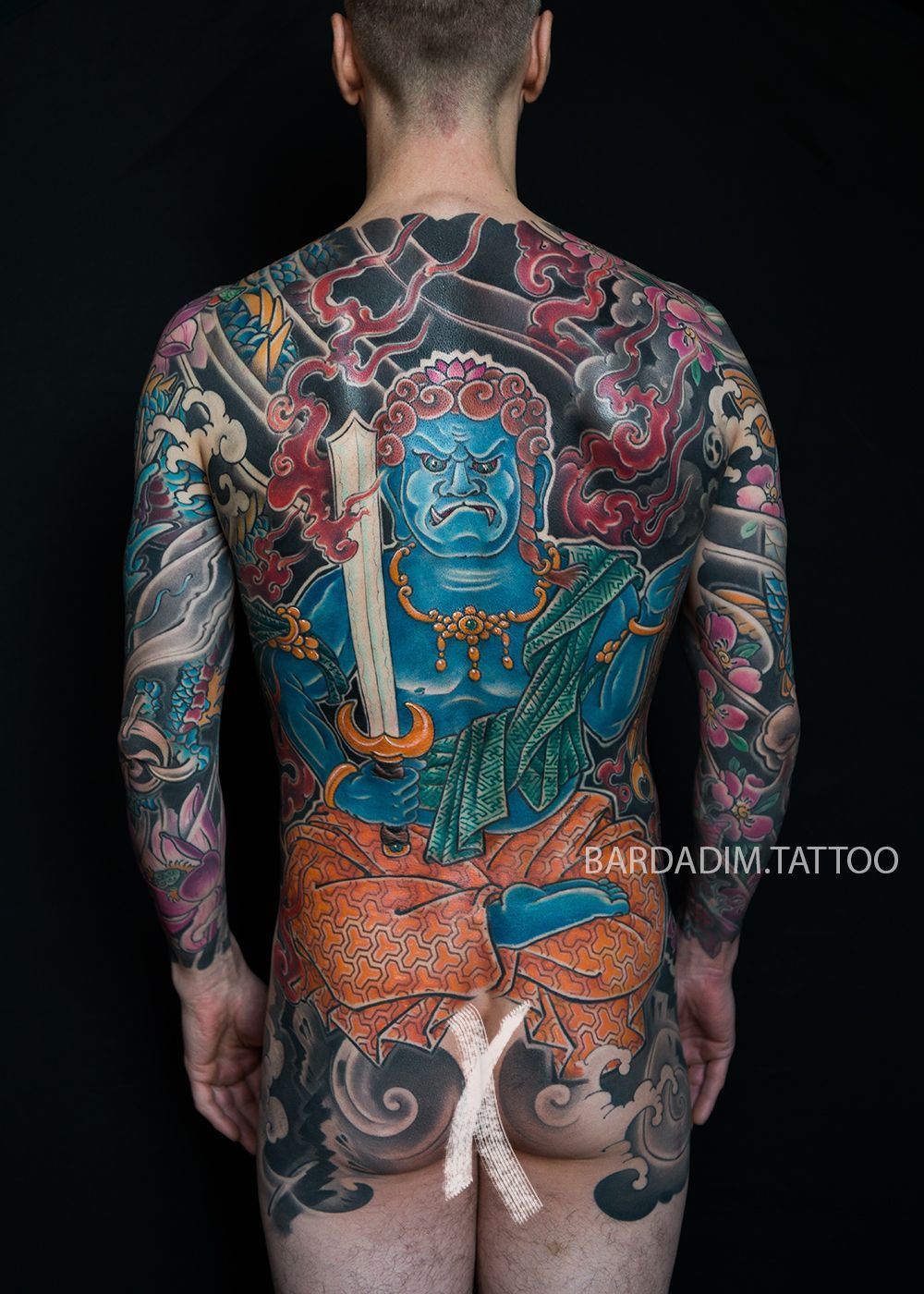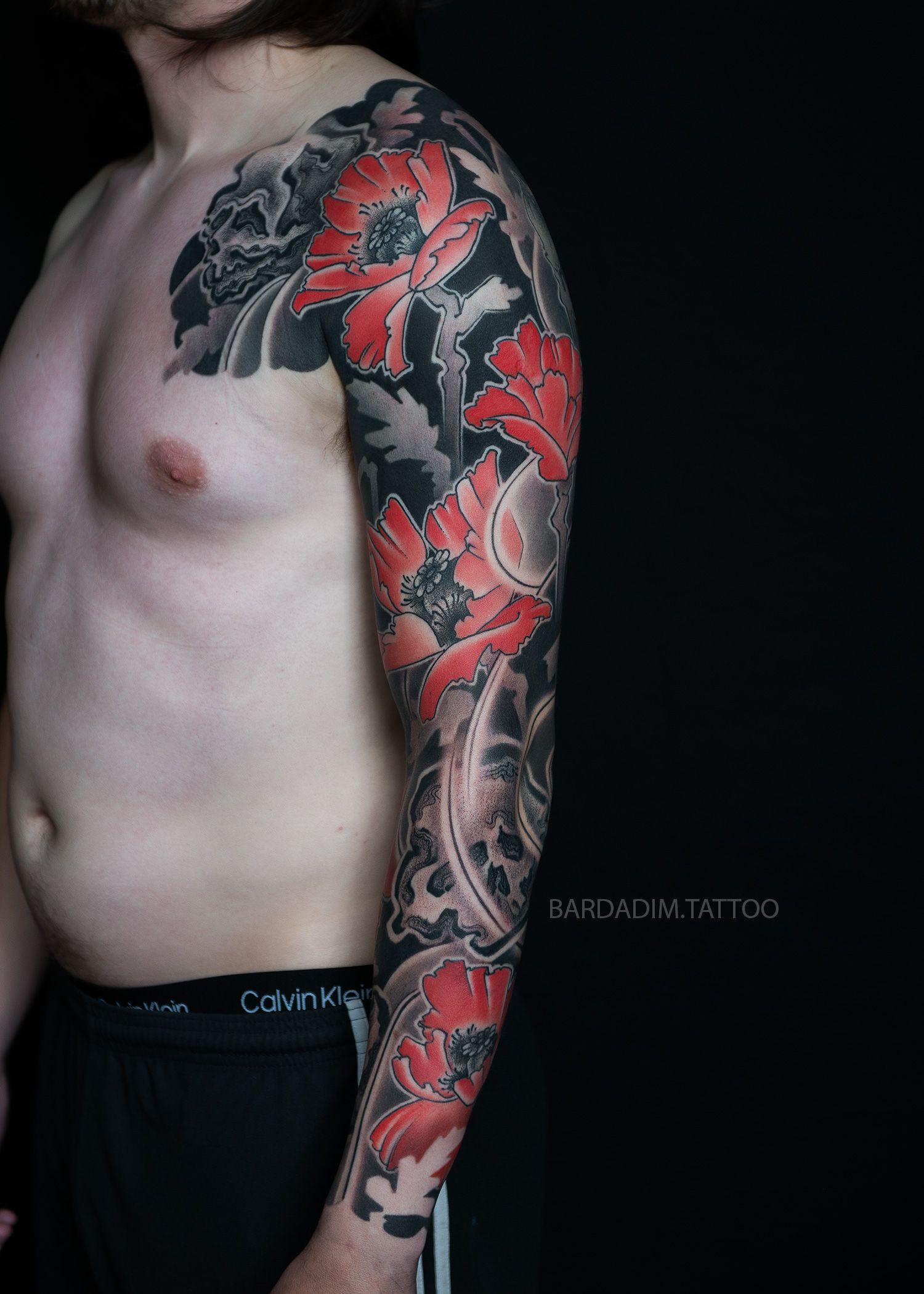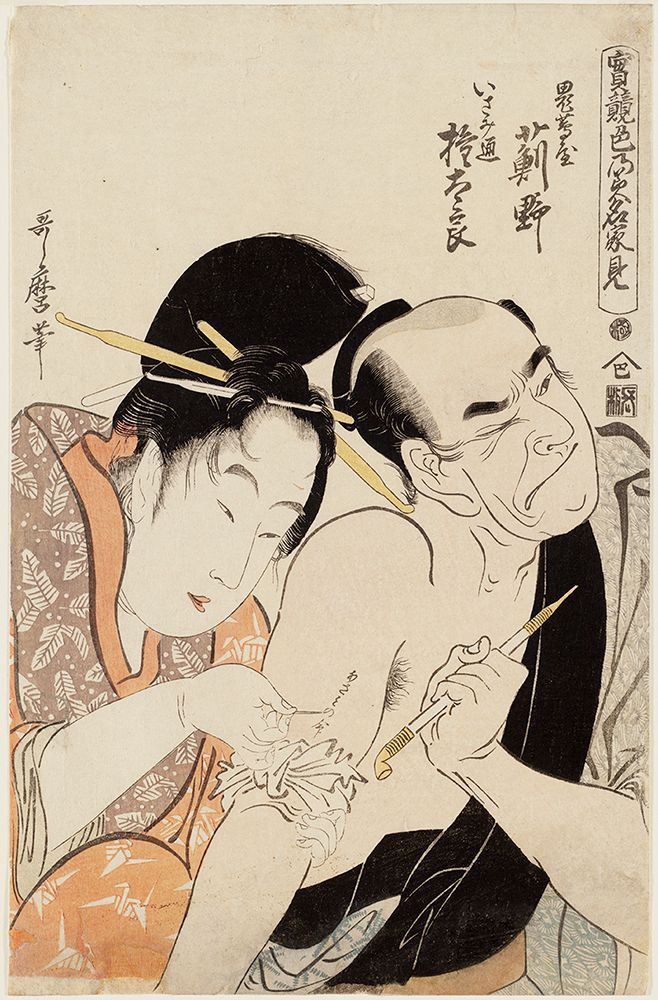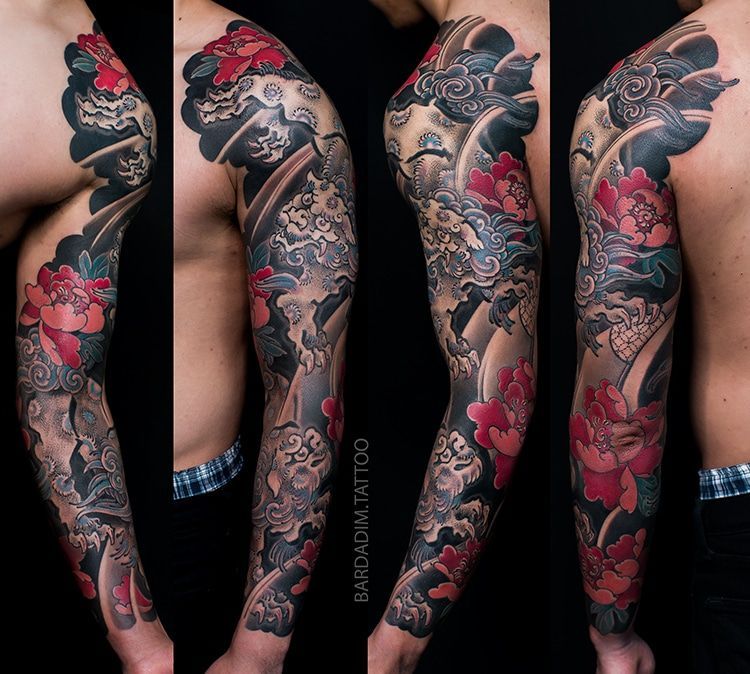Owl Tattoo Sleeve done in Japanese style by George Bardadim, resident artist at Tattoo Culture , Brooklyn NYC.
Irezumi Symbology by Irezumi Art UK.
Until the Edo period in Japan (1600–1868) tattoos, world wide, were done with marks and symbolism rather than imagery. It was in Japan, in the Edo period, that “decorative” tattoo began to develop into the advanced art form it is known as today.
The Traditional Japanese Tattoo “Irezumi” is the decoration of the body with mythical beasts, flowers, leafs, and other images from stories, myths and tales. The impetus for the development of the art was the progression of the woodblock prints and notably the “hero’s heavily decorated with Irezumi”. Wearing Irezumi is an “Aspiration” to life’s goals.
Woodblock artists began tattooing, using many of the same tools for tattooing as they did to create their woodblock prints, including chisels, gouges and, most importantly, unique ink known as Nara ink , or Nara black , the ink that famously turns blue-green under the skin, which is the true look of the tattoo.
There is academic debate over who wore these elaborate tattoos. Some scholars say that it was the lower classes who wore such tattoos. Others claim that wealthy merchants, barred by law from flaunting their wealth who wore expensive Irezumi under their clothes. It is known for certain that Irezumi became associated with and proudly worn by the firemen, dashing figures of bravery and roguish sex-appeal who wore them as a form of spiritual aid and protection, thus the revered “Suit of Nine Dragons” to give power over wind and water.


